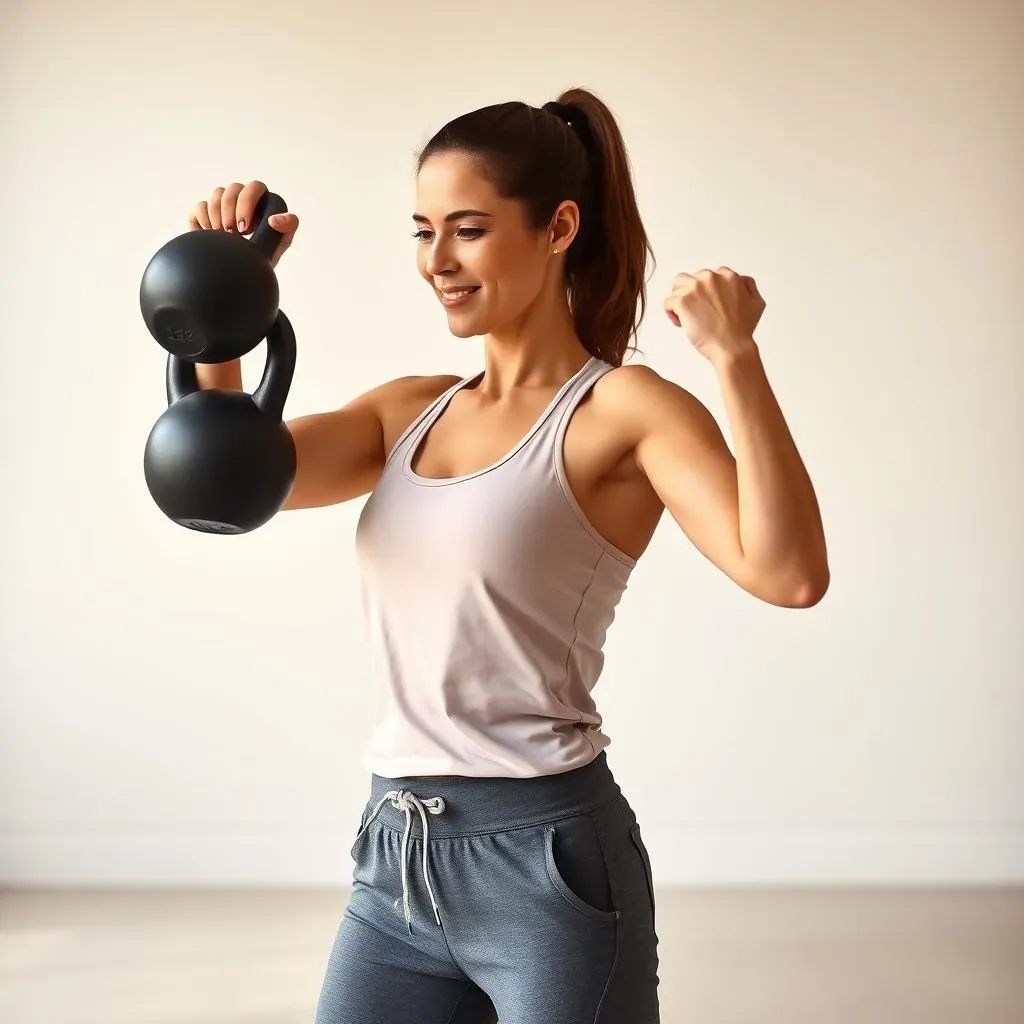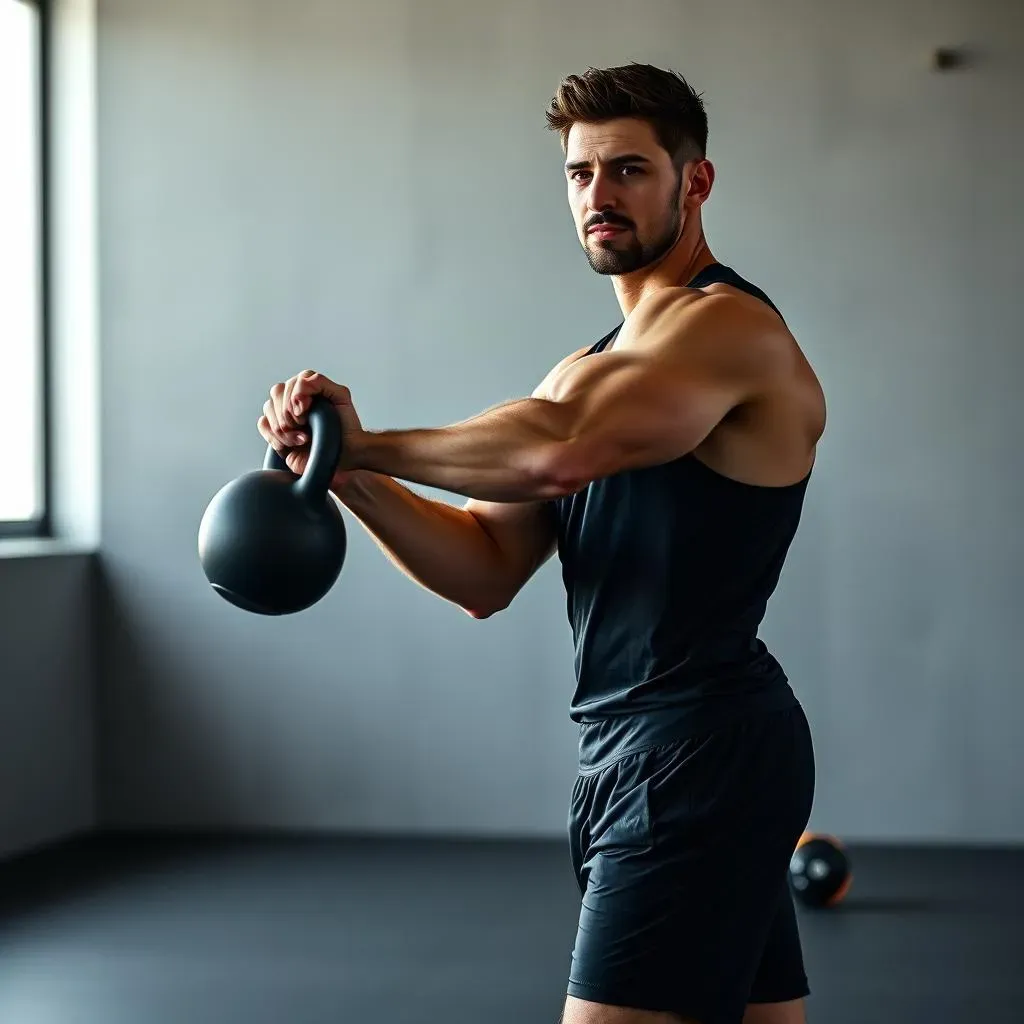Table of Contents
Ready to unleash your inner powerhouse in just 20 minutes? This article is your guide to the ultimate 20 minute beginner kettlebell workout, a fantastic way to build strength, boost your fitness, and sculpt your body. We'll walk you through everything you need to know, from selecting the right kettlebell for your level to mastering the essential exercises. Forget boring routines! This 20 minute beginner kettlebell workout is designed to be fun, effective, and completely achievable for beginners. We'll break down a simple, yet powerful, full-body routine that you can easily follow at home or in the gym. Plus, we'll show you how to progress your training as you get stronger, ensuring you continue to see results. Whether you're a complete newbie or looking for a quick and efficient workout, this 20 minute beginner kettlebell workout will transform your fitness journey. So grab your kettlebell (or find out which one to buy!), and let's get started!
Getting Started: Choosing Your Kettlebell and Mastering the Basics

Getting Started: Choosing Your Kettlebell and Mastering the Basics
Picking Your Perfect Kettlebell
So, you're ready to jump into the world of kettlebells? Awesome! But before we get to the awesome workouts, let's talk about choosing your first kettlebell. Think of it like picking the perfect paintbrush for a masterpiece – the right tool makes all the difference. You don't want something too heavy that'll make you throw your back out on the first swing (ouch!), nor something too light that won't challenge you. For a beginner, a lighter kettlebell is usually better. A good starting point for women is a 12kg (25 lbs) kettlebell, while men might start with a 16kg (35 lbs) one. But hey, everyone's different, so don't be afraid to experiment! Check out our guide on are kettlebells the best workout? to help you make the right choice.
Now, kettlebells aren't all created equal. You'll find different types, like cast iron (sturdy and affordable) and competition kettlebells (sleeker, more balanced). For beginners, a cast iron kettlebell is perfectly fine. Focus on a comfortable handle – you'll be gripping it a lot! And remember, you can always upgrade later as you get stronger. Need more ideas? Check out our best beginner kettlebell workout for more tips.
Kettlebell Type | Pros | Cons |
|---|---|---|
Cast Iron | Durable, affordable | Can be bulky |
Competition | Balanced, sleek | More expensive |
Mastering the Kettlebell Swing: Your First Move
The kettlebell swing is your foundational move – it's like the alphabet of kettlebell training. It works your entire body, especially your posterior chain (glutes, hamstrings, back). Don't worry, it's not as complicated as it sounds. Imagine you're chopping wood – that's the basic movement! Start with a lighter weight, focus on proper form (plenty of videos online can help!), and gradually increase the weight as you get more comfortable. Remember, quality over quantity – perfect form is key to avoid injuries. A good example of this is found in our kettlebell workouts for beginners guide.
Before you start swinging, make sure you're warmed up! Some simple stretches or light cardio will prepare your muscles. This will help you avoid injuries and get the most out of your workout. If you're unsure about your form, check out our detailed guide on ultimate kettlebell exercises for beginners pdf — it's a lifesaver!
- Start light
- Focus on form
- Warm up first!
Your 20Minute FullBody Kettlebell Workout Routine

Your 20Minute FullBody Kettlebell Workout Routine
Warm-up: Get Your Body Ready
Before you dive into the main workout, a proper warm-up is crucial. Think of it as prepping your engine before a race – you want everything running smoothly! Start with 5 minutes of light cardio, like jumping jacks or high knees, to get your blood flowing. Then, do some dynamic stretches, such as arm circles, leg swings, and torso twists. This will loosen up your muscles and prepare them for the workout ahead. Don't skip this step; it helps prevent injuries and improves performance. Need some extra inspiration? Our 15-minute kettlebell workout for beginners has some great warm-up ideas.
Remember, a good warm-up isn't just about stretching; it's about preparing your body for the specific movements you'll be doing. This will help you get the most out of your workout and minimize the risk of injury. We've got some great tips on warming up properly in our guide on kettlebell workouts for beginners.
- 5 minutes light cardio
- Dynamic stretches (arm circles, leg swings)
- Focus on the movements to come
The Workout: Three Rounds of Awesome
Now for the fun part! This workout is structured in three rounds. Each round includes a series of exercises that work different muscle groups. Remember to maintain good form throughout. It's better to do fewer repetitions with perfect form than many with sloppy form. Here’s the breakdown:
Round 1: 8 Kettlebell Halos, 10 Goblet Squats, 8 Overhead Presses. Round 2: 15 Kettlebell Swings, 8 Bent-Over Rows, 6 Front Rack Reverse Lunges. Round 3: Repeat Round 1. Rest for 60 seconds between each round. This allows your muscles to recover before starting the next round. Remember, consistency is key! Even if you can only manage a few reps of each exercise, keep going. You'll improve over time.
Round | Exercise | Reps |
|---|---|---|
1 | Kettlebell Halos | 8 |
1 | Goblet Squats | 10 |
1 | Overhead Presses | 8 |
2 | Kettlebell Swings | 15 |
2 | Bent-Over Rows | 8 |
2 | Front Rack Reverse Lunges | 6 (each leg) |
3 | Kettlebell Halos | 8 |
3 | Goblet Squats | 10 |
3 | Overhead Presses | 8 |
Cool-Down: Wind Down and Recover
Once you've completed all three rounds, it's time to cool down. This is just as important as the warm-up! A cool-down helps your heart rate and breathing return to normal, and it also helps to prevent muscle soreness. Spend 5 minutes doing some static stretches, holding each stretch for 20-30 seconds. Focus on the muscles you worked during the workout, such as your legs, arms, and back. Think of it as giving your muscles a gentle massage!
Cooling down properly can make a real difference in how you feel the next day. It helps your body recover and prepare for your next workout. For more detailed instructions, check out our guide on beginner kettlebell workouts. Remember to listen to your body, if you're feeling any pain, stop and rest.
- 5 minutes of static stretching
- Hold each stretch for 20-30 seconds
- Focus on the muscles worked
Level Up: Progressing Your Kettlebell Journey

Level Up: Progressing Your Kettlebell Journey
Increasing the Weight
So, you've conquered the beginner routine? Fantastic! Now it's time to challenge yourself. Gradually increasing the weight of your kettlebell is key to continued progress. Think of it like climbing a mountain – you wouldn't sprint to the top, right? Start by adding 2-4kg (5-10 lbs) to your kettlebell. Don't jump to a massive increase; that's a recipe for injury. Focus on maintaining good form and gradually increase the weight as you become more comfortable.
Remember, it’s not about lifting the heaviest weight possible; it's about performing each exercise with perfect form. This ensures you’re working the correct muscles and avoid injuries. If you find yourself struggling to maintain proper form, decrease the weight and focus on technique. Our guide on best kettlebell workouts for beginners offers some great tips on progressive overload.
- Increase weight gradually (2-4kg/5-10lbs)
- Prioritize proper form over weight
- Listen to your body!
Adding New Exercises
Once you feel comfortable with the weight, it's time to expand your exercise repertoire! Think of it as adding new colors to your painting – it makes the picture more vibrant and exciting. There are tons of kettlebell exercises out there, so don't be afraid to experiment. Try incorporating new moves like Turkish get-ups, kettlebell snatches, or clean and presses. But remember to start slowly and focus on mastering the proper technique before increasing the reps or weight. Take a look at our ultimate kettlebell exercises for beginners pdf for more ideas.
Remember, proper form is crucial for preventing injuries and maximizing results. If you’re unsure about the correct technique for a new exercise, check out some videos online or consult a fitness professional. Our kettlebell workouts for female beginners guide also provides excellent visuals and instructions.
Exercise | Muscle Groups Worked | Difficulty Level |
|---|---|---|
Turkish Get-Up | Full Body | Intermediate |
Kettlebell Snatch | Full Body | Intermediate |
Clean and Press | Shoulders, Arms, Core | Intermediate |
Increasing Workout Intensity
Ready for a real challenge? Let's talk about intensifying your workouts! One way to do this is by increasing the number of sets and reps you perform. Another effective method is to reduce the rest time between sets. This will elevate your heart rate and make your workout more challenging. You can also incorporate high-intensity interval training (HIIT) techniques into your routine. This involves alternating between short bursts of intense exercise and short periods of rest. Check out our kettlebell HIIT workout for beginner for a sample routine.
Remember, consistency is key to achieving your fitness goals. Try to stick to your workout schedule as much as possible, and don't be afraid to adjust your routine as needed. If you’re feeling burned out or experiencing pain, take a rest day or two. Rest is just as important as exercise! Our beginner kettlebell workout emphasizes the importance of listening to your body.